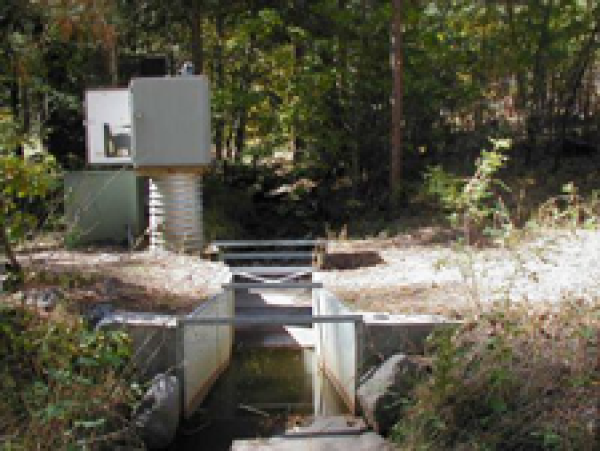This website uses a variety of cookies, which you consent to if you continue to use this site. You can read our Privacy Policy for
details about how these cookies are used, and to grant or withdraw your consent for certain types of cookies.
Yet More Ways to Screw Up a Flume Installation
When we wrote our article on Ways to Screw Up a Flume Installation, and its companion piece More Ways to Screw Up a Flume Installation, we touched on some of the basic ways that an installation can go awry. Those lists, like the one following, were not intended to cover every possible situation that a flume installation can be screwed up – just some of the more common (or comical) ones.
Mounting the Flow Meter Over the Throat of the Flume
Because the throat of a flume is its defining characteristic and the section of its geometry that is easiest to recognize, it is not uncommon to see the flow meter mounted over the throat. Cutthroat, Palmer Bowlus, Parshall, and Trapezoidal flumes all seem to experience this problem.
Unfortunately, as we discussed in Ways to Screw Up a Flume Installation, the throat is where flow is accelerated from subcritical to supercritical flow…it is NOT the location where curvilinear flow is measured. The point of measurement is ALWAYS upstream of the throat.

As flow approaches the throat of a flume it accelerates. Accelerating, the surface of the water drops as it approaches and then transitions through the throat. Measuring in the throat, therefore, will indicate a level lower than is present at the actual point of measurement.
Putting the Flume in Backwards
This problem is more prevalent in flat-bottomed flumes like the Cutthroat, Palmer Bowlus, and Trapezoidal flumes than it with drop-bottomed flumes like the Parshall. Although they are flat-bottomed flumes, we’ve never seen the problem before with H Type flumes or Montana flumes – you’d have to try really hard to put those in backwards. The problem occurs because the inlet and outlet geometries are the same for some flumes.
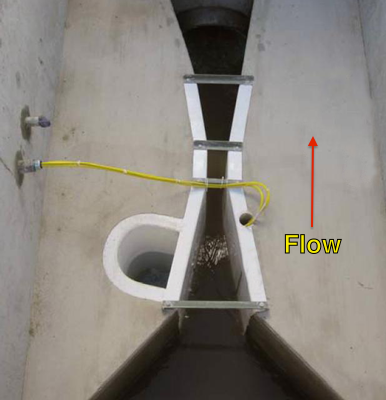
Setting the Floor of the Flume at the Wrong Elevation
When setting a flume, the floor of the flume should at or above that of the channel or pipe.
Setting the floor of a flume below that of the inlet channel or pipe will generate turbulence in the upstream portion of the flume (where the point of measurement is located). Additionally, if the floor of the flume is below the elevation of the downstream channel or pipe, the flume will submerge - with standing water always present.

For SOME flumes set at the wrong elevation, a remedy is available: replacement floors. Replacement floors are intended to install over an existing floor to bring the completed installation to the proper elevation. Replacement floors are available for: Cutthroat, Montana, and Parshall Flumes. They are not available for H Type, Palmer-Bowus, RBC, or Trapezoidal flumes due to their crossectional geometries.
Grouting the Bottom of a Palmer Bowlus Flume
You would think (or at least we would) that the shaped geometry of the Palmer Bowlus is such that, to the casual observer, the throat of the flume is molded in for a specific reason and, as such, wouldn’t be modified. Apparently it isn’t that obvious to everyone.
Several times over the years we have seen installers decide to grout the bottoms of Palmer Bowlus flumes so that they are flush with the tops of the throat ramps. Now luckily fiberglass and concrete bond poorly so it hasn’t always been a total loss, but still...don’t do it!
Not Capturing All of the Flow
Again, a no-brainer here. To measure the flow, you have to divert all of it into the flume. The transitions from the flume to the channel walls must completely span the distance between the two and must be watertight.
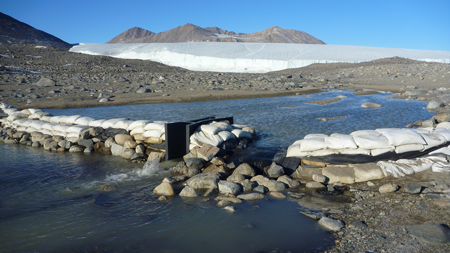
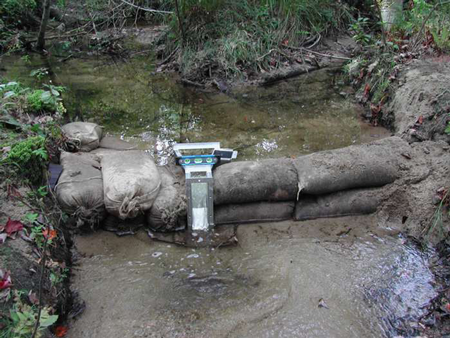
Additionally, steps should be taken to ensure that upstream scour does not occur under the flume so that flow does not undermine the flume.
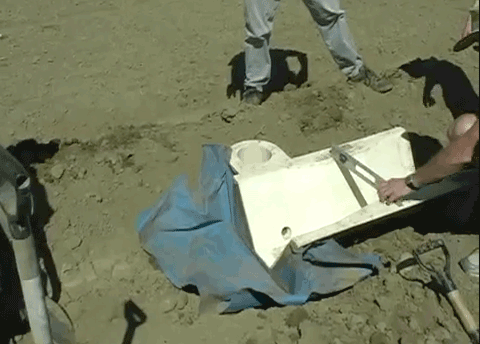
As we've said before...many of these guidelines are covered in our standard Flume Installation Instructions, but it doesn’t hurt to remind you of them again!
To see some of the other ways to screw up a flume installation, take a look at Ways to Screw Up a Flume Installation and More Ways to Screw Up a Flume Installation.
Related Blog Posts
Explore more insights in our blog.

LOCATIONS IN ATLANTA, GA & BOISE, ID



